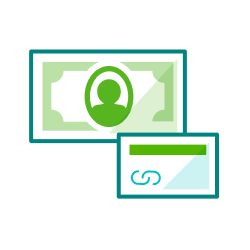Create invoices
by Intuit•920• Updated a day ago
Learn how to create and send invoices in QuickBooks Online.
Invoices are how you charge your customers for the products and services you sell. You can add the product or service you’re selling to an invoice and email it to your customer.
 If you'd like to make it easy for your customers to pay an invoice online, check out QuickBooks Payments rates and apply.
If you'd like to make it easy for your customers to pay an invoice online, check out QuickBooks Payments rates and apply.
The QuickBooks design has been updated! If this video doesn't match what you see in QuickBooks, use the in-app Search bar to navigate to the page you need.
Get personalized help using QuickBooks with QuickBooks Live.
Create an invoice from scratch
Create an invoice from scratch if you don’t have any existing records to import or estimates to convert.
- Select + Create.
- Select Invoice.
- Select a customer from the Add customer ▼ dropdown.
- Make sure all of their info is correct, especially their email address.
- Review the Invoice date, Due date, and Terms. Enter new dates or terms, if you need to. Tip: In the Terms field, Net refers to the number of days until the payment is due.
- For each line item on the invoice, select a product or service from the ▼ dropdown. To add additional line items, select Add product or service.
- Select how you want to calculate the charge amount - flat rate, by hour, or by item. Enter a quantity and rate, if needed.
- To customize the info or design of your invoices, select Manage ⚙. Then select the options from the side panel. QuickBooks remembers your choices and applies them to all existing and future invoices.
- Select Save and close. If you want to send it, select Send and save, then follow the prompts on your screen.
Next steps
Once you create an invoice, send it to the customer.
When your customer makes a payment on an invoice, record it in QuickBooks Online. You may need to do this more than once if they don't pay the invoice in full.
Related links
- Understand invoices in QuickBooks Online
- Learn common accounting terms
- Send an invoice to a customer in QuickBooks Online
- Send invoice reminders automatically or manually in QuickBooks Online
- Record invoice payments in QuickBooks Online
- Connect QuickBooks Payments to QuickBooks Online
- Customize invoices, estimates, and sales receipts in QuickBooks Online
More like this
- Create and send multiple invoicesby QuickBooks
- Create an invoice in QuickBooks Desktopby QuickBooks
- Create invoicesby QuickBooks
- Create invoices for a parent customer and its sub-customers in QuickBooks Onlineby QuickBooks